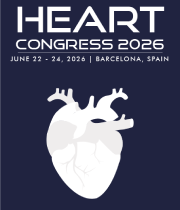Title : Cardiac vector theory! A paradigm shift in ECG interpretation or a perspective rethinking in ECG translation from scalar to vector form
Abstract:
Electrocardiography (ECG) has offered valuable insights in health and disease for nearly a century yet its interpretation remains an arduous task and needs the help of medical experts in that field. Einthoven used the concept of cardiac vector to describe the electrical activity of the heart even before a century but never published a detailed description. Various other researchers attempted to solve this problem but was not completed. The complete Heart-Lead vector relationship and Einthoven’s equilateral triangle hypotheses was described in detail by the current author in previous research articles.
Cardiac Vector Hypothesis states that voltage (scalar quantity measured in volt) recorded in a particular lead is the result of dot product between cardiac vector (electrical field vector of dimension volt/metre) and lead vector (measured in metre). The lead vector denotes the orientation of the electrode position. The magnitude and orientation of heart vector with lead vector will cause deflections in the ECG voltage in the vertical axis resulting in the formation of ECG waves. The velocity of Cardiac Vector is related with time in the horizontal axis of ECG.
In the hex-axial reference system of ECG, plot the net voltages of bipolar limb leads and connect them. Similarly, plot the net voltages of unipolar limb leads and connect them. Each forms equilateral triangles. The voltage recorded by the electrodes (Lead I, II, III, aVR, aVL and aVF denoting right arm, left arm and left leg) are the vertices of an electrical equilateral triangle. The equilateral triangle can be converted into a circle. Each circles have same origin, same orientation, but different radii because bipolar and unipolar limb leads have different resistance. Multiply each unipolar limb lead voltages by correction factor 1.154 and then plot. The two equilateral triangles are on the same circle.
Each cardiac wave can be represented in the form of circles. The diameter of the circle denotes the resultant cardiac vector. The perimeter (circumference) of the circle denotes the electrical field of the heart which it generates with heart at the center of the circle. Each cardiac wave (P, QRS, T) can be represented in the form of circles. All circles (see the diameter) should be formed in the left lower quadrant except QRS which can go up to -30 degree. When the angle between ‘QRS’ and ‘T’ circles deviate it usually denotes ischemia. The size of a circle will be greater for higher voltage and vice versa. During ST-segment no circle will be formed since it is an iso-electric period. The amount of myocardial injury will be related to the magnitude of circle during the ST-segment.
The better understanding of vector physics principle and its application in each ECG tracing helps to overcome the arduous task of ECG interpretation. The combination of the 12-lead ECG with this Novel Perspective ECG translation (resultant cardiac vector represented by circle in the hex-axial reference system) provide the optimum approach to ECG interpretation resulting in saving millions of cardiac patients.
Keywords: Cardiac Vector; ECG Translation; Perspective ECG interpretation;
Audience Takeaway:
- Basic mathematical concepts of scalar and vector.
- Formulation of Cardiac Vector theory and its application in ECG Interpretation
- Novel Perspective ECG Interpretation - ECG Translation from scalar to vector form
- Understanding the cardiac vector theory will help in prompt Interpretation of ECG report that helps in reducing the mortality of the number one killer disease of the world



